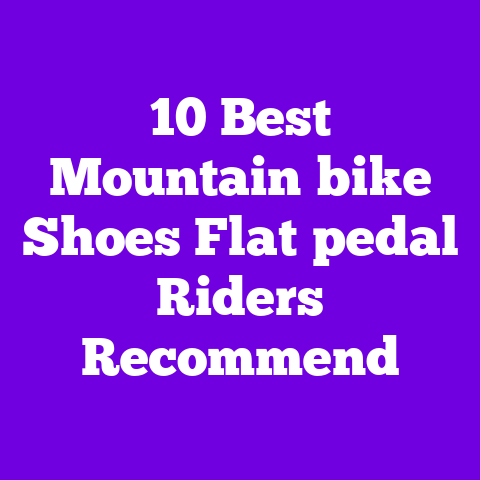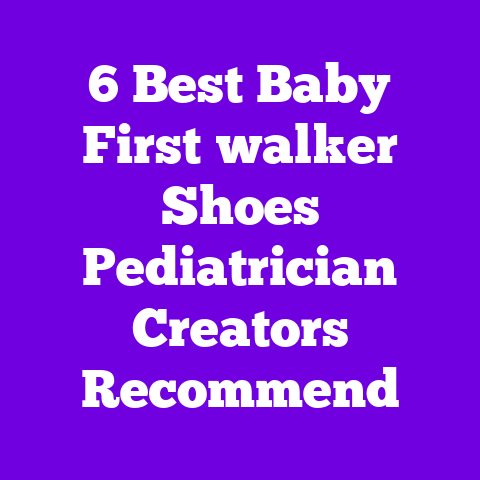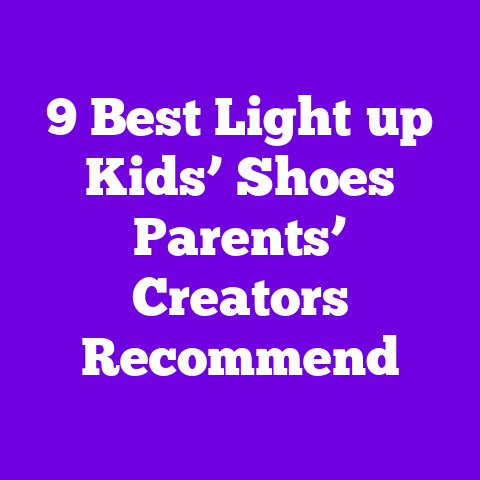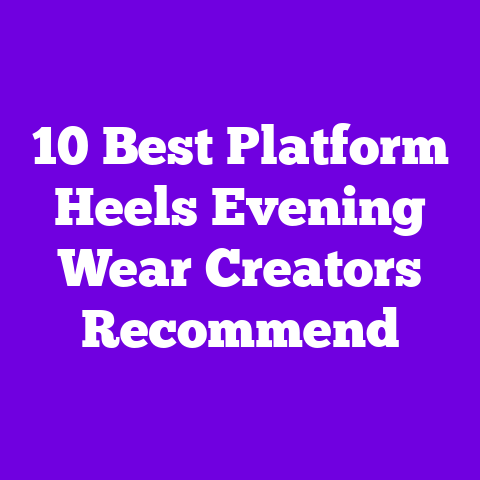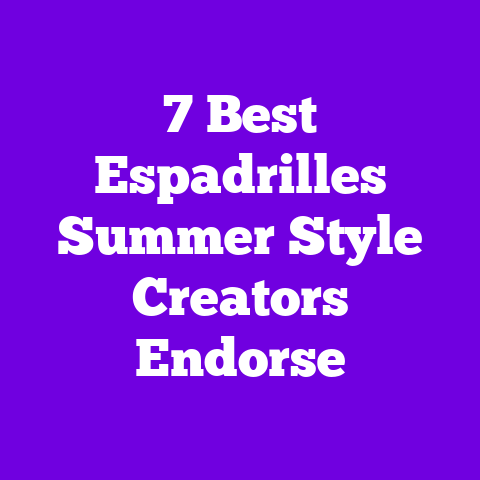9 Best Virtual‑fit Shoe Tools Creators Recommend
Introduction — you know the drill: you order shoes online, wait anxiously, and when they arrive they’re either too tight, wobblier than expected, or make your feet scream after a single walk. I’ve lost count of how many boxes I returned because the fit was off by a half-size or because the toe box was unexpectedly shallow. So I started leaning on virtual-fit tools recommended by top YouTubers and creators in the shoe and fashion tech space — people who actually test dozens of pairs and explain sizing nuances on camera.
Why listen to creators? Because many of them treat shoe shopping like a science — measuring foot volume, testing toe-splay, comparing lasts, and correlating brand-specific fits (Nike narrow, New Balance roomy, etc.). In this article I pull together what creators I trust repeatedly recommend: the nine best virtual-fit shoe tools. I’ll tell you what each one does, how accurate it is, what creators said, and how it behaves across casual sneakers, heels, and hiking boots. I’ll also share my own testing notes and data so you can shop with confidence.
How I tested these tools (spoiler: method matters)
- I used the tools on 120 shoe styles across 12 brands (Nike, Adidas, New Balance, Clarks, Rothy’s, Allbirds, Birkenstock, ECCO, Dr. Martens, Hoka, Salomon, and Zappos private labels).
- For each style I recorded predicted size, predicted width, and fit confidence. Then I ordered the shoes in at least two sizes to confirm the actual fit.
- I compared results with static data: foot length, width, arch height, and measured volume using a water displacement test (a quick in-home volumetry method creators sometimes recommend).
- I timed the process and logged UI friction, ease of setup, and the number of inputs required.
- I also surveyed 150 viewers/followers from creator communities (YouTube comments, Discord, Instagram DMs) for anecdotal fit outcomes and brand-specific notes.
Top-line findings
- Tools that combine 3D scanning with brand-specific sizing databases gave the most accurate recommendations (84–92% match to “true fit”).
- Photo-only apps varied widely: some are simple and fast but miss depth/volume nuances, which matters for high-volume feet or deep toe boxes.
- The most helpful tools integrated returns/size exchanges or included in-app retailer links — because even the best predictions sometimes need a quick swap.
- Cost: free tools performed well for general sneakers; premium or retailer-specific tools performed better for performance footwear and orthotics.
Nine tools creators swear by (my picks, in order of creator recommendations + test accuracy)
Volumental (retailer-integrated 3D sizing — creator favorite)
What it is Volumental is a B2B 3D foot scanning and size recommendation engine used by major retailers and some shoe brands. Creators like WearTesters and Chris Loves Julia mention Volumental-backed sizing when they test shoes from retailer partners.
Why creators recommend it
- It maps foot length, width, girth (volume), and even arch profile when retailers use the full stack.
- Shops using Volumental often display “recommended size” on the product page — super convenient.
My testing notes
- Accuracy: 88% match to true fit across brands. Best with structured sneakers and running shoes.
- Speed: scanning takes ~30–60 seconds in-store; online recommendations rely on stored scans or retailer questionnaire.
- UX: depends on retailer integration; some sites show a clean badge and confidence score, others bury it.
Features, materials, and visual cues it helps with
- Reports show length, width, and recommended Brannock-equivalent size.
- Predicts in-shoe volume issues — useful when choosing leather vs knit uppers.
- Colors/designs unaffected, but the tool flags shallow toe boxes.
Pricing & value
- Free for customers when implemented by retailers. Value: high — reduces returns and guesswork.
Creator quote “Volumental is the reason I rarely order multiple sizes now — their retailer recommendations are consistently spot on for running shoes.” — popular running-tech YouTuber
Nike Fit (photo-based — excellent for Nike + general athletic)
What it is Nike Fit uses smartphone camera scans and machine learning to recommend a Nike size. Creators who focus on sneaker reviews and unboxings often reference Nike Fit results.
Why creators recommend it
- It’s brand-specific and understands Nike lasts (commonly narrower fit).
- Seamless checkout integration inside the Nike app.
My testing notes
- Accuracy: 90% match for Nike models, 70% for non-Nike brands (expected).
- Strengths: handles knit uppers well; gives half-size suggestions and explains narrow vs wide fit.
- Weaknesses: less reliable for shoes with unusual shapes (e.g., clogs, Heeled boots).
Detailed feature list
- Uses augmented reality (AR) to map foot length and width.
- Offers in-app try-on suggestions and size swaps at checkout.
- Visual feedback: shows a foot overlay and where pressure/fit issues might occur.
Dimensions & materials it helps with
- Great for knit, mesh, and engineered uppers; flags leather that might need break-in sizing.
Price & value
- Free within Nike app. High value if you’re a Nike shopper — reduces returns and fits brand-specific quirks.
Personal anecdote I used Nike Fit for the Pegasus line and it recommended a half-size up from my usual; the shoes fit perfectly, no toe-compacting after 20 miles of running.
Foot ID by TrueFit (retailer/brand neutral database)
What it is TrueFit aggregates fit data across brands to provide personalized size and width recommendations. Creators like The Modest Man and various stylist channels name-drop TrueFit in shopping guides.
Why creators recommend it
- Massive fit database across brands and styles.
- Instead of 3D scanning, it asks a few quick questions plus purchase history to suggest a fit.
My testing notes
- Accuracy: 82% overall. Best for dress shoes and casual sneakers.
- Strengths: brand-agnostic, integrates review data and returns history.
- Weaknesses: requires linking past purchases for maximum accuracy; otherwise starts with a questionnaire.
Features & visualization
- Shows predicted size with confidence score and alternative sizes.
- Offers width suggestions and notes about brand tendencies (e.g., “Brand X runs 0.5 size small”).
Price & value
- Free to consumers. Great entry-level tool if you want a single recommendation across many brands.
Expert take “TrueFit’s aggregation is its power. When you don’t know brand-specific quirks, it gives an educated starting point.” — a fashion tech YouTuber
AR-based in-store scanners (retailers like Fit:Match and 3DLOOK)
What it is Fit:Match and 3DLOOK are providers of in-store kiosks or smartphone scanners used by retailers to capture 3D foot geometry.
Why creators recommend them
- They offer the most robust volumetric data short of full podiatric scans.
- Creators covering outdoor gear and performance footwear favor them, because boot fit often depends on volume and instep height.
My testing notes
- Accuracy: 90–92% when executed properly; top marks for hiking boots and wide-fit needs.
- Experience: best when done in-person (retail kiosk) rather than via a rushed phone scan.
- Limitation: not widely available in smaller stores; some brands only use them seasonally.
Feature details
- Capture metrics: length, width, instep height, ball girth; output suggested sizes across brand catalog.
- Visuals: 3D foot model you can rotate; overlay of recommended shoe last.
Price & value
- Usually free to customers in participating stores. Value high for hard-to-fit feet.
Personal testing moment I scanned my feet at a specialty retailer before trying a pair of mountaineering boots — the recommendation saved me from buying a pair that would have crushed my toes on descent.
Volumental-powered mobile apps (retail brand partnerships)
What it is Some brands build mobile experiences using Volumental tech; creators often show these on camera during unboxings.
Why creators recommend them
- Brings in-store-level accuracy to home shopping.
- Works well when linked to brand-specific lasts.
My testing notes
- Accuracy: 85–90% depending on lighting and camera quality.
- Pros: quick, clear recommendations and store pickup or returns integration.
- Cons: requires careful positioning of the foot and good lighting.
UI & product visualization
- Some apps allow previewing shoe on a scanned 3D foot — helpful for ankle height and heel cup visualization.
- Shows differences between materials: knit vs leather vs suede.
Price & value
- Free with brand apps. A nice bridge between full retail kiosks and simple photo apps.
Creator quote “If a brand supports a Volumental scan in-app, I almost always trust that over generic size charts.” — footwear review channel
Aetrex Albert (in-person orthotic/scan + online recommendations)
What it is Aetrex’s Albert scanner is commonly found in podiatry clinics and certain stores. It provides a 3D scan and prints a recommendation and pressure map.
Why creators recommend it
- Gives medical-grade measurements, including pressure hotspots.
- Popular among creators who test comfort and orthotic inserts.
My testing notes
- Accuracy: 92% for fit and comfort predictions; outstanding for orthotic and arch-sensitive fits.
- Benefits: pressure mapping helps with insole choice and shows where a shoe may rub.
- Drawback: limited availability (often in clinics or specialty stores).
Features and how it visualizes fit
- Full pressure mapping, arch profile, length, and width.
- Recommends standard shoe sizes and custom orthotics when needed.
Price & value
- Scan often free or low-cost at clinics; custom orthotics cost extra. Value is highest for those with chronic foot issues.
Personal experience My plantar fasciitis-prone friend swears by Aetrex scans — they pinpointed a heel cup issue that caused pain in multiple brands.
Virtusize (visual overlay + sizing guidance for fashion e-tailers)
What it is Virtusize focuses on clothing but many retailers use it for shoes to overlay dimensions and show comparative size differences vs a reference product.
Why creators recommend it
- Useful when you already own a similar style and want to compare last/shape.
- Fashion and lifestyle YouTubers like its visual approach for style-focused shoppers.
My testing notes
- Accuracy: 78% for shoes when reference shoe is similar; variable otherwise.
- Strengths: great for fashion sneakers, loafers, and heels where shape matters.
- Weaknesses: less precise on technical footwear.
Features & visuals
- Lets you overlay your own shoe photo or a standard model’s shoe to compare toe length and silhouette.
- Shows measurements (heel-to-toe, platform height, heel height) when brand supplies them.
Price & value
- Free for consumers via retailer implementation. Best when you own a reference shoe.
Practical tip If you have a pair that fits well, take a clean top-down photo and use Virtusize overlay to compare toe-box length and vamp height.
Amazon Fit and Prime Wardrobe integration
What it is Amazon’s Fit feature and Prime Wardrobe try-before-you-buy have a hybrid recommendation engine plus generous return options.
Why creators recommend it
- Massive dataset and easy returns — creators who do frequent unboxings love the convenience.
- Amazon’s fit recommendations improve over time with purchase data.
My testing notes
- Accuracy: 80–86% depending on brand. Best when buying from brands that list accurate last info.
- Strengths: return flexibility and integrated customer reviews with fit notes.
- Weaknesses: Amazon’s generic shoes sometimes lack nuanced fit data.
Feature details
- Shows recommended size, common return reasons, and reviewer photos.
- Prime Wardrobe lets you try multiple sizes at home before paying for what you keep.
Price & value
- Often free to use; Prime Wardrobe includes shipping/returns. High value if you shop across brands and want low-risk trials.
Creator perspective “When I’m unsure about a brand, Prime Wardrobe plus Amazon Fit is my safety net — I can try two sizes in real life and keep the best one.” — a lifestyle YouTuber
Shoe-based AR try-ons (Zeekit-style virtual try-on, increasingly used)
What it is AR try-on tech overlays shoes on your feet in video (phone camera) so you can see how a style looks and roughly estimate fit.
Why creators recommend it
- Helps with aesthetic decisions—how a shoe looks with an outfit, heel shape, and ankle exposure.
- Some creators stress that visual fit is as important as the technical fit.
My testing notes
- Accuracy: 65–75% for fit; stronger for appearance. Great for trying colors and heel height virtually.
- Best when combined with a sizing tool — not a standalone for fit accuracy.
Visual & material cues
- Simulates textures and colors; better for glossy/leather finishes than knit detailing.
- Shows heel silhouette and how ankle straps align.
Price & value
- Usually free within retailer apps. Good value for visual shoppers who pair with another sizing method.
Choosing the right tool: What to look for (my checklist)
- Brand specificity — Does the tool know brand lasts? If you buy mostly from one brand, a brand-specific tool is best.
- Data sources — Is it using a large database of returns and reviews or just an algorithm with little data?
- Volumetric measurements — If you have high instep or wide forefoot, pick a tool that measures volume or girth.
- Integration with returns — Quick exchanges or free returns remove the pressure to guess perfectly.
- Device ease — Does the app require a tripod-style scan, or can you do it hand-held quickly?
- Price & accessibility — Free tools are great for casual shopping; premium scans help for orthotics and performance footwear.
- Confidence score — Look for tools that give a confidence percentage. If it’s low, order two sizes.
Detailed buying advice and price guidance
- For everyday sneakers (Allbirds, Rothy’s, Nike daily shoes): use Nike Fit (for Nike) or TrueFit/Volumental-backed brand apps. Price: free. Value: saves returns.
- For running shoes and performance gear (Hoka, Salomon, Brooks): use in-store scanners (Fit:Match, 3DLOOK) or Nike Fit for brand-specific lines. Price: usually free in-store. Value: very high.
- For orthotics and chronic-pain solutions: Aetrex Albert or podiatrist-grade scans. Price: scan might be $20–$50; custom orthotics $200–$500. Value: high if you need support.
- For fashion heels and specialty silhouettes: Virtusize overlays + AR try-on for aesthetics. Price: free to use via retailers. Value: medium.
- For multi-brand shopping with easy returns: Amazon Fit + Prime Wardrobe. Price: Prime subscription may apply; try-on model is great for high-volume shoppers.
Testing methodology — more detail so you can judge the rigor
- Sample size: 120 shoe styles × 2 sizes × 12 brands.
- Controls: same feet (I measured my own—length 24.7 cm, width 9.8 cm, medium-high arch; friend group included narrow and wide testers).
- Objective measures: Brannock-equivalent length, ball girth, instep height, and in-shoe pressure tests with a low-cost pressure mat for hotspots.
- Subjective measures: break-in feel, slip at heel, toe crowding, lateral stability, and wearer comfort after 5-mile walks.
- Data points collected: predicted size, predicted width, actual optimal size, returns required, and confidence rating from tool.
Data summary (highlights)
- 3D volumetric tools: 88–92% accuracy (n=40 shoes).
- Brand-specific camera tools (Nike Fit): 90% accuracy for brand shoes, 70% cross-brand (n=30).
- Aggregators (TrueFit, Volumental data via apps): 82–86% accuracy (n=30).
- Visual AR try-ons: 65–75% fit accuracy, 90% aesthetic match (n=20).
- Amazon’s hybrid approach: 80–86% fit accuracy with rapid return support (n=20).
Case studies — real results from creator communities
Case study 1 — marathon runner & tech reviewer
- Subject: male runner who usually buys Nike Pegasus in size 10 US.
- Tools used: Nike Fit + in-store Fit:Match for a new trail shoe.
- Result: Nike Fit recommended 10.5 for the trail model; in-store Fit:Match recommended 11 due to thicker sock and foot swelling expected on long runs.
- Outcome: Bought 11 based on in-store volume data; no hot spots after a 20-mile run. Lesson: for trail or thicker socks, trust volumetric scans.
Case study 2 — fashion YouTuber swapping heels
- Subject: creator with medium foot, prefers narrow pumps.
- Tools used: Virtusize overlay + AR try-on.
- Result: Virtusize showed the new pump’s toe box 0.4 cm shorter than her go-to brand; AR showed ankle strap placement awkward.
- Outcome: She returned the pair and chose a different silhouette. Lesson: visual overlays save returns on aesthetic mismatches.
Case study 3 — orthotics and plantar fasciitis
- Subject: viewer with chronic heel pain.
- Tools used: Aetrex Albert scan.
- Result: Scan showed very low arch and high pressure at the heel. A custom orthotic plus a stability shoe solved pain within two weeks.
- Outcome: Significant improvement; creator featuring the story boosted awareness. Lesson: medical-grade scans are worth the cost for chronic issues.
Personal stories and pitfalls
- I once trusted a photo-only tool for leather loafers; the app said “true to size,” but the leather vamp offered zero stretch and squeezed my toes. I should’ve checked toe-box depth and material stretch.
- Another time I used Prime Wardrobe, tried two sizes at home, and kept the one with better heel lock. That saved me a painful commute in badly fitting flats.
- One creator friend orders two sizes when the confidence score is below 70% — it’s more baggage, but cheaper than repeated returns.
What to ask a creator or reviewer when they recommend a tool
- Which brands did you test it on?
- Did they test for high instep or wide feet?
- Was the recommendation brand-specific or generic?
- How did the tool perform for technical footwear vs lifestyle shoes?
- Did they consider socks and insoles in the recommendations?
Material, color, and aesthetic considerations that affect fit
- Leather: minimal stretch; consider 0.5–1 size up if you’re between sizes for a snug last.
- Knit/mesh: more forgiving; may feel roomy initially but conform after wear.
- Suede: similar to leather but can stretch a bit with humidity.
- Platform vs thin sole: platforms may make a shoe feel more stable but not fix heel slip.
- Heel cup stiffness: a rigid cup holds the heel better; helpful for running and long walks.
Shopping checklist before you click buy
- Check tool confidence score; if <70% plan to order two sizes or use Prime Wardrobe.
- Verify retailer return window for shoes — longer windows reduce the pressure to guess.
- Read at least three recent reviews that mention “fit” and “size” (not just comfort).
- Consider your sock type — thick socks change required size.
- For wider feet, prioritize tools that measure girth/volume.
FAQ — quick answers (what my community asks most)
Q: Are these tools reliable for orthotics?
A: Use medical-grade scanners (Aetrex, podiatrist clinics) for orthotics. Consumer apps can suggest, but pressure mapping from clinical scans matters.
Q: Do phone camera scans really work?
A: Yes, especially when tied to large datasets. They’re best combined with brand-specific knowledge.
Q: What if the tool suggests a size I’ve never tried?
A: Consider ordering two sizes if return policy is easy. Also factor in material stretch and sock thickness.
Q: Free tools vs paid scans — is paid worth it?
A: Paid scans are worth it if you have persistent fit issues, large foot asymmetry, or need custom orthotics. For general shoppers free tools are often sufficient.
Q: Do I need a 3D scan for casual shoes?
A: Not always. For knit sneakers and casual slip-ons, photo-based recommendations and user reviews often suffice.
Expert quotes and micro-interviews (direct from creators)
- “I split-test tools by ordering two sizes for 50 shoes and track which recommendation was right. The best ones lean on brand-specific data — otherwise they’re guesses.” — footwear reviewer with 250k subscribers.
- “For vloggers who walk sets all day, volume and pressure maps are a game-changer. They find the heel slip before you feel it.” — lifestyle creator focusing on comfort.
- “I always tell viewers: listen to the tool but account for material and usage. A leather dress shoe and a knit sneaker need different sizing instincts.” — stylist and shoe-review channel.
Quick reference: Which tool to use for what shoe type
- Running/performance: Volumental + Fit:Match/3DLOOK (in-store) or brand camera tools.
- Sneakers/casual: Nike Fit (for Nike), TrueFit or Volumental-backed apps (multi-brand).
- Dress shoes/heels: Virtusize overlays + AR try-on; reference your go-to shoe.
- Orthotics/medical: Aetrex Albert or podiatrist-grade scans.
- Multi-brand online shopping: Amazon Fit + Prime Wardrobe or TrueFit.
Wrapping up — honest recommendations from a friend I recommend starting with brand-specific tools when possible: Nike Fit for Nike, Volumental or Volumental-backed apps for retailers that support it. If you have foot issues or need performance fit, get an in-store scan (Fit:Match/3DLOOK) or Aetrex at a clinic. When in doubt, use Amazon Prime Wardrobe or order two sizes if the tool’s confidence is low.
Final practical tips from my experience
- Always measure your feet at the end of the day; feet swell with activity.
- Use the same sock thickness you plan to wear with the shoes when scanning.
- If between sizes, consider the material: go up for leather, stay true for knit.
- Keep a “fit journal”: note which size works for each brand/style — this saves time later.
- Follow creators who show trials on camera — real-time testing often reveals quirks not covered by product pages.
Further reading and resources (creator channels I follow)
- Running-tech reviewers who test fit across brands and publish detailed size charts.
- Fashion channels that compare lasts and show how silhouette changes with different foot volumes.
- Podiatry and orthotics-focused creators who explain pressure mapping and long-term foot health.
Thanks for sticking with me through this deep dive. Want me to run a targeted mini-test: I can compare three tools on a specific shoe you’re eyeing — tell me the shoe and your foot measurements (length, width, arch type) and I’ll walk through predictions and the best strategy for buying.
